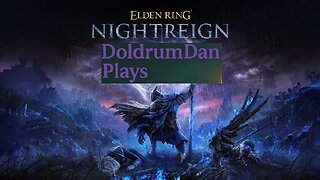Premium Only Content

Episode 3116: The Shadow of Peter - Morning Episode
Nightly Zoom Coordinates for Rosary:
Meeting ID: 865 8978 0399
Passcode: Wjjv4960!
Speak Lord for your Servant is Listening
Book Recommendation of the Day
St Barnabas: Apostle of Encouragement” by Michael J. Ruszala
• Summary: A concise and readable biography of St. Barnabas, ideal for general Catholic readers.
• Focus: His role in the early Church, relationship with St. Paul, missionary work, and legacy as “the Son of Consolation.”
• Audience: Catholics seeking a spiritually uplifting and historically grounded portrait of the saint.
• Publisher: CreateSpace / Catholic Way Publishing
Before we get started let me explain what What Are Ember Days?
Ember Days are traditionally observed:
• After Ash Wednesday (Spring)
• After Pentecost Sunday (Summer)
• After the Exaltation of the Holy Cross on September 14 (Autumn)
• After the Feast of St. Lucy on December 13 (Winter)
These days always fall on the Wednesday, Friday, and Saturday following the corresponding feast.
________________________________________
Ember Days After Pentecost: Their Significance
The Ember Days following Pentecost Sunday are traditionally tied to the summer season and occur during the Octave of Pentecost. From a traditional standpoint, they serve several spiritual and ecclesiastical purposes:
1. Thanksgiving to God for the Gifts of the Holy Ghost:
o Since Pentecost is the feast of the descent of the Holy Ghost, the Ember Days following it are a time to thank God for His sanctifying gifts, and to invoke the fruits of the Holy Spirit in one's soul.
2. Fasting and Penance:
o Even amid the joy of Pentecost, the Church reminds the faithful that the spiritual life requires discipline and mortification, just as the Apostles went into fasting and prayer before undertaking their apostolic missions.
o
3. Ordination of Clergy:
o Traditionally, Ember Saturdays were days for the ordination of priests and deacons. The faithful were encouraged to fast and pray for holy vocations and the sanctification of the clergy.
o This practice is rooted in Acts 13:3, where we read: "Then they, fasting and praying, and imposing their hands upon them, sent them away."
4. Sanctification of Time and Seasons:
o The Church seeks to baptize the calendar, sanctifying the natural cycles of the year with sacred intention and penance. The summer Ember Days are an opportunity to dedicate the coming harvest and labor to God, asking for His blessing.
Liturgical Observance (Traditional Latin Mass)
In the Traditional Latin Mass, the Ember Days during Pentecost week are rich in liturgical symbolism:
• The Wednesday Mass includes multiple readings and references to Moses, the Law, and God's power.
• The Friday Mass emphasizes penance and deliverance.
• The Saturday Mass (Ember Saturday) contains five readings (prophecies), a Gospel, and the chanting of ordination prayers (when ordinations occur).
Fasting and Abstinence
Traditionally, the Ember Days were observed with:
• Fast on Wednesday, Friday, and Saturday (one full meal and two small ones).
• Partial abstinence on Wednesday and Saturday (meat only at main meal), and total abstinence on Friday (no meat at all).
• These practices were mandatory before the 1960s changes, and many traditional Catholics voluntarily continue to observe them today in the spirit of reparation and sanctification.
Spiritual Benefits and Encouragement
From a traditional Catholic perspective, observing Ember Days:
• Unites us to centuries of Catholic tradition.
• Brings sanctification to the clergy, especially when done with intention.
• Allows for reparation for sins, personal and ecclesial.
• Helps rekindle a seasonal rhythm of holiness, drawing us closer to the natural law and divine providence.
Final Thought
In a time where fasting and penance are nearly forgotten, Ember Days remain a hidden treasure of the Church’s tradition. They remind us that the Holy Ghost sanctifies us not only with joy, but also through discipline, detachment, and prayer leading to deeper spiritual fruit.
The Shadow of Peter, the Bread of Heaven, and the Fire of Pentecost”
Today’s episode brings us into the heart of Eastertide and Ember Wednesday after Pentecost, a powerful moment when we contemplate the miraculous power of the Apostles, the Eucharistic discourse of Christ, and the descent of the Holy Ghost. These readings call us back to the foundations of the Church holiness, sacrament, and mission.
The Shadow of Peter – Acts 5:12–16
“They brought forth the sick into the streets, and laid them on beds and couches, that when Peter came, at least his shadow might overshadow any of them…”
The early Church was alive with apostolic power, not in theory but in action. This passage from the Book of Acts reveals the overflowing grace of Pentecost still active in the days following the Resurrection. The Apostles, especially Peter, were healing, preaching, and gathering the faithful.
Notice the imagery of shadow a biblical symbol of God’s protective presence (Psalm 91:1). Here, Peter becomes a living tabernacle of divine power. Why? Because he had received the Holy Ghost and was obedient to Christ.
Reflection:
• Do we believe that the Church still possesses this power today?
• Or have we allowed modern skepticism to dull our sense of wonder?
As Traditional Catholics, we must reclaim a supernatural faith not just in private devotion but in public witness.
The Bread of Life – John 6:44–52
“No man can come to Me, except the Father… draw him… and the bread that I will give is My flesh, for the life of the world.”
Here Christ prepares His followers for the Holy Eucharist, the mystery that scandalized many. He affirms that His Body is the true heavenly Manna, surpassing the manna of the desert in the days of Moses.
This Gospel calls to mind the Mass not just a community meal, but the re-presentation of Calvary, where the Bread of Heaven is offered for the life of the world.
St. Thomas Aquinas wrote:
“O precious and wonderful banquet, that brings us salvation and contains all sweetness!”
But how many Catholics today believe in the Real Presence? A Pew study in recent years suggested only 30% of Catholics believe that the Eucharist is truly the Body and Blood of Christ.
As faithful Traditionalists, we must hold fast to what the Church has always taught: the Eucharist is Christ Himself, hidden under sacramental veils.
Let us ask ourselves: Are we spiritually prepared to receive Him? Do we fast, confess, and adore Him with reverence?
Pentecost Proclamation – Acts 2:14–21
“Peter, standing up with the eleven, lifted up his voice…”
The Lesson from Ember Wednesday after Pentecost brings us to the moment the Apostles first preached boldly. Peter, transformed by the Holy Ghost, no longer hides in fear. He becomes the rock proclaiming Christ to the world.
This moment fulfills Joel’s prophecy:
“I will pour out My Spirit upon all flesh…”
Ember Days were established by the Church to sanctify the seasons through fasting, prayer, and thanksgiving—especially for vocations and ordination. In these post-Pentecost Ember Days, we pray for renewed strength among our clergy and laity.
Ask yourself:
• Are we proclaiming Christ with courage?
• Are we praying for holy priests the Peters of our time?
Let us also remember that Ember Days were always days of penance. How ironic that in an age of comfort and abundance, so few even know Ember Days exist. Yet the Traditional Calendar preserves this rhythm of repentance and renewal.
Practical Application for Today
Let us live what we’ve received:
1. Faith like the early Church expect miracles, trust in the Apostles’ successors, and recognize sacramental grace.
2. Reverence for the Eucharist – attend the Traditional Latin Mass when possible, prepare our souls, and teach others the truth of the Real Presence.
3. Boldness like Peter – defend the faith without fear, especially in a world that silences truth.
4. Penance in Ember Days – fast, pray, and offer sacrifice for the sanctification of the Church.
The shadow of Peter still falls upon the Church. The Bread of Life is still broken for us. The Holy Ghost still fills the faithful.
Closing Prayer
O God, Who taught the hearts of the faithful by the light of the Holy Ghost, grant that by the gift of the same Spirit we may be always truly wise and ever rejoice in His consolation.
Through Christ our Lord. Amen.
St. Peter, Prince of the Apostles — pray for us.
St. John the Evangelist, defender of the Eucharist — pray for us.
St. Rocco, protector in plague and peril — pray for us.
Thank you for joining us for this episode of Traditio Fidei. If this episode deepened your faith or inspired your prayer, consider sharing it with a friend or fellow parishioner.
Until next time, stay rooted in tradition, faithful in Christ, and ever under the mantle of Our Lady.
-
 1:20:13
1:20:13
Sports Wars
5 hours agoCollege Football UPSETS, MLB Playoff Drama, NFL Week 4
30.5K6 -
 1:00:24
1:00:24
Jeff Ahern
2 hours ago $0.95 earnedThe Sunday Show with Jeff Ahern
4.59K6 -
 LIVE
LIVE
DoldrumDan
3 hours agoNEW STREAM SCHEDULE 3PM EST TO 7PM EST EVERY DAY
295 watching -
 LIVE
LIVE
Sgt Wilky Plays
2 hours agoSunday Finals | Regiment Donor Drive
49 watching -
 17:23
17:23
Russell Brand
1 day agoThey couldn't handle this...
101K297 -
 18:18
18:18
DeVory Darkins
20 hours ago $25.36 earnedPortland gets NIGHTMARE NEWS as Trump orders Troops to crush violent rioters
42.1K296 -
 LIVE
LIVE
Ouhel
4 hours agoSUNDAY | Active Matter | Exploring the postapocalyptic | O'HELL LIVE
59 watching -
 LIVE
LIVE
Astral Doge Plays!
5 hours agoFinal Fantasy IX ~LIVE!~ Iifa Tree Visitation Hours
24 watching -
![[Classic] Pac-Man World Re-Pac 1 and 2 👻 🟡 🟡 🟡 Relaxing on Sunday](https://1a-1791.com/video/fwe2/7a/s8/1/W/5/8/l/W58lz.0kob-small-Classic-Pac-Man-World-Re-Pa.jpg) LIVE
LIVE
J0hnThunder
4 hours ago[Classic] Pac-Man World Re-Pac 1 and 2 👻 🟡 🟡 🟡 Relaxing on Sunday
123 watching -
 LIVE
LIVE
Lofi Girl
2 years agoSynthwave Radio 🌌 - beats to chill/game to
168 watching